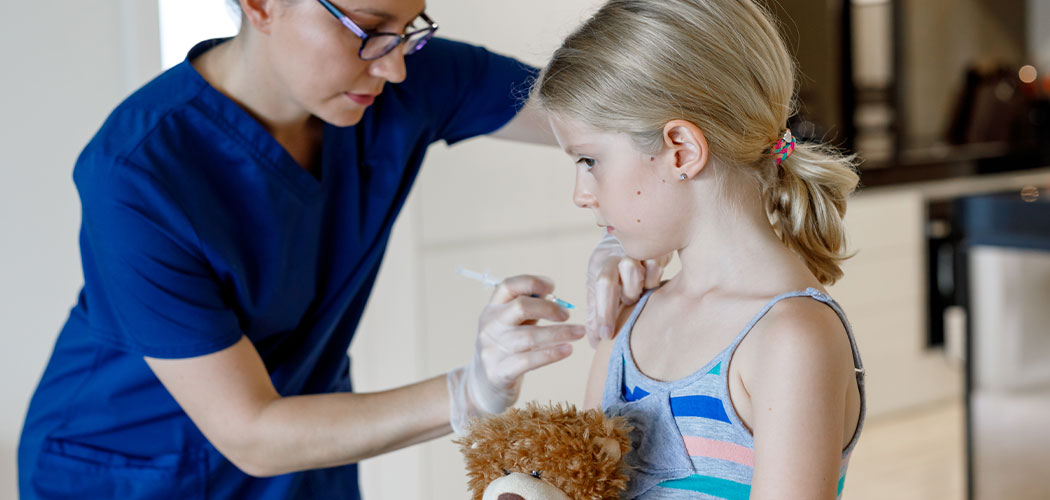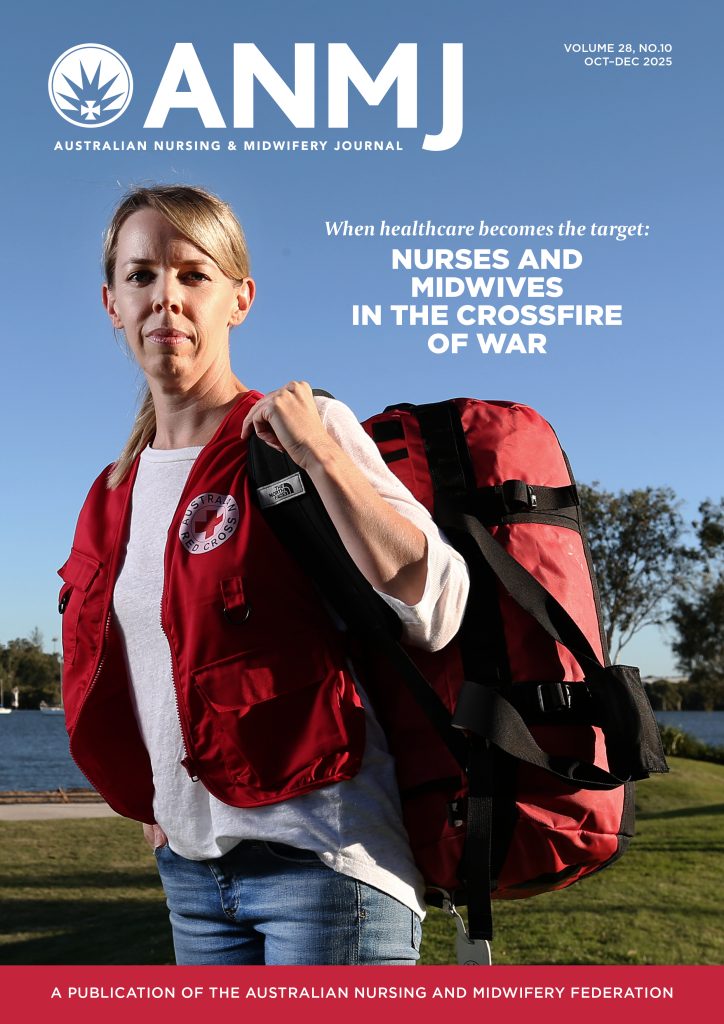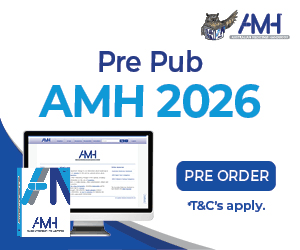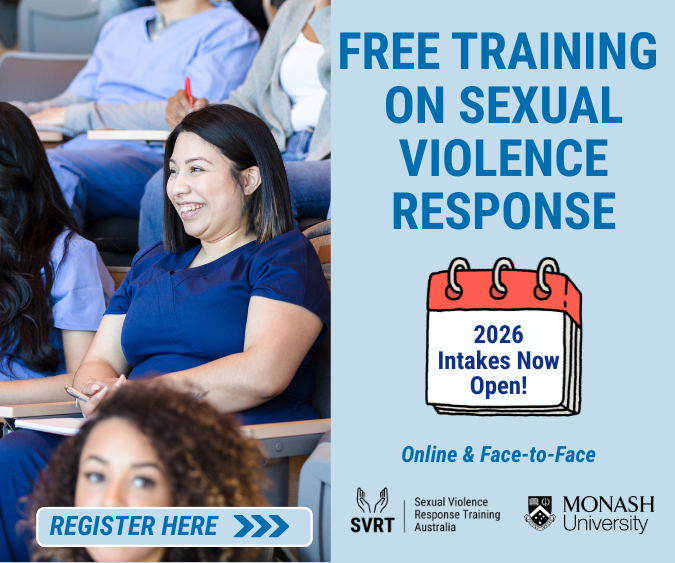New data from the Australian National Centre for Immunisation Research and Surveillance on vaccination coverage reveals a continuing decline in vaccination rates among Australian children and adolescents since the onset COVID-19 pandemic.1
The drop spans a broad range of vaccines including for whooping cough, diphtheria, tetanus, rotavirus, pneumococcal disease, polio, hepatitis B, multiple strains of meningococcal disease, measles, mumps, and rubella (MMR), and the human papillomavirus vaccine. These diseases can cause serious illness and death. Alarmingly, current coverage levels have fallen below the threshold needed to maintain herd immunity; where enough of the population has sufficient immunity to a particular infectious disease to make it very challenging for an illness to spread within the community.2
The decreasing childhood vaccination rate has been attributed to shifting perceptions about vaccines, influenced in part by the COVID-19 pandemic. A 2022 report from the Department of Health and Aged Care revealed that strong support for childhood vaccination among parents of children aged 0–5 dropped from 72% in 2017 to 50% in 2022.3 Reduced parental confidence in vaccines following the COVID-19 pandemic could be a likely contributor. An Australian study by Kaufman and colleagues examined parents’ perceptions of vaccines before and after the pandemic, finding an increase in the proportion of parents believing that children receive too many vaccines, that vaccines cause autism, and vaccine ingredients may cause harm.4 This is despite clear evidence that COVID-19 vaccinations and those for other diseases are safe and effective for eligible infants, children, and adults and not associated with autism.
Vaccine hesitancy and resistance to vaccination is a complex and multifaceted issue which predates the COVID-19 pandemic.5 Factors contributing to vaccine hesitancy and resistance include social determinants of health, how convenient and accessible vaccines are, levels of health literacy, how clear and understandable the information is, perceptions of risks versus benefits, views on collective versus personal responsibility, trust or distrust in health care providers (HCPs) or the healthcare system, and personal or cultural beliefs, customs, and ideologies. Increased attention on vaccines during the pandemic also gave rise to unreliable, inauthentic, misleading, or objectively false reports and claims about vaccines, which have likely contributed to community member and parental concerns about vaccine safety and effectiveness.5
Nurses, midwives, and general practitioners are widely considered by community members to be the most trusted sources for immunisation information and delivery.6
Trust and mistrust play a crucial role in how individuals make decisions about vaccination.7 Generally, trust refers to the belief that one’s well-being, safety, and interests will be prioritised in decisions and medical treatments carried out by HCPs. Trust is a key factor influencing whether individuals and communities choose to follow recommendations from government bodies and HCPs and must be a focus of any multicomponent intervention to address vaccine hesitancy and resistance.5 When people have had negative personal or systemic experiences with HCPs, they may be less inclined to trust them, and as a result, may hesitate to accept a new or unfamiliar vaccine.8
The post-COVID landscape remains uncertain, with the public continuing to seek reliable information and reassurance about immunisations.9 This is also occurring in a heavily digitised world where many people access information from both personal contacts, the media, and a range of online sources, many of which might not be reputable, accurate, or evidence based. A key barrier for HCPs to address vaccine hesitancy is community members having a mistrust in the healthcare system and finding it hard to regain that trust.10
The Nursing and Midwifery Board of Australia requires all registered nurses, enrolled nurses, and midwives to base person-centred care on the best available evidence, which includes sharing information about public health matters.11 Some HCPs, however, feel inadequately prepared for the role of immunisation promotion and provision,12 with nurses and midwives reporting receiving minimal immunisation education in undergraduate courses.13
Conversations with parents regarding vaccination can be complex, with midwives in particular finding negotiating the requirement to recommend immunisation within a women-centred framework often challenging.14 Although most midwives in Australia support vaccination, there is a shortage of up-to-date, culturally sensitive education that equips them to confidently discuss immunisation with parents.15 Nurses working in general practice report a lack of consistent and current information, particularly with safety of the MMR vaccine.16
Nurses, midwives, and their professional organisations should play an active role in collaborating with policymakers and health authorities when developing and implementing vaccine recommendations and strategies to address vaccine hesitancy. Nurses and midwives also require more support to effectively promote and facilitate parental trust in vaccination. Integrating a woman-centred approach into pre-registration training and continuing professional development could support midwives in closing the gap between evidence and practice, ultimately enhancing vaccine uptake.15 Communication tools that reflect midwifery practice standards can further assist midwives in responding to parents’ questions and concerns about maternal and childhood vaccinations.17 Also, primary care nurses who provide most childhood vaccinations, need to be equipped with the most contemporary evidence regarding vaccination to inform their clinical practice.16
Authors
Dr Kim Gibson is a Research Fellow based in the Rosemary Bryant AO Research Centre, Clinical and Health Sciences, University of South Australia.
Associate Professor Micah DJ Peters PhD is the Director of the ANMF National Research and Policy Unit (Federal Office) based in the Rosemary Bryant AO Research Centre, Clinical and Health Sciences, University of South Australia.
References
- Annual Immunisation Coverage Report 2024 – interim data release [Internet]. National Centre for Immunisation Research and Surveillance Australia; 2025. Available from: https://ncirs.org.au/immunisation-coverage-data-and-reports/annual-immunisation-coverage-report-2024-interim-data
- Desai AN, Majumder MS. What is herd immunity? JAMA. 2020;324(20):2113.
- Wolstenholme A, Smith C. Community attitude research on childhood immunisation 2022. Sydney (AU): Department of Health; 2022. Available from: https://www.health.gov.au/resources/publications/community-attitude-research-on-childhood-vaccination-2022-research-report?language=en
- Kaufman J, Hoq M, Rhodes AL, Measey MA, Danchin MH. Misperceptions about routine childhood vaccination among parents in Australia, before and after the COVID‐19 pandemic: a cross‐sectional survey study. Med J Aust. 2024;220(10):530-2.
- Peters M. Addressing vaccine hesitancy and resistance for COVID-19 vaccines. Int J Nurs Stud. 2022;135:104312.
- Smith SE, Sivertsen N, Lines L, De Bellis A. Weighing up the risks—vaccine decision-making in pregnancy and parenting. Women Birth. 2022;35(6):547-52.
- González-Melado FJ, Di Pietro ML. The vaccine against COVID-19 and institutional trust. Enferm Infecc Microbiol Clin (Engl Ed). 2020;38(8):387-8.
- Moran MB, Frank LB, Chatterjee JS, Murphy ST, Baezconde-Garbanati L. Information scanning and vaccine safety concerns among African American, Mexican American, and non-Hispanic White women. Patient Educ Couns. 2016;99(1):147-53.
- Fiftyfive5. Immunisation Exploratory Research – Final report. Department of Health and Aged Care; 2024. Available from: https://www.health.gov.au/resources/publications/immunisation-exploratory-research-final-report?language=en
- Cassidy C, Langley J, Steenbeek A, Taylor B, Kennie-Kaulbach N, Grantmyre H, et al. A behavioral analysis of nurses’ and pharmacists’ role in addressing vaccine hesitancy: scoping review. Hum Vaccin Immunother. 2021;17(11):4487-504.
- Position statement on nurses, midwives and vaccination [Internet]. Nursing & Midwifery Board of Australia; 2016. Available from: https://www.nursingmidwiferyboard.gov.au/codes-guidelines-statements/position-statements/vaccination.aspx#:~:text=NMBA%20position%20on%20nurses%2C%20midwives,the%20best%20available%20scientific%20evidence.
- Smith SE, Sivertsen N, Lines L, De Bellis A. Decision making in vaccine hesitant parents and pregnant women – an integrative review. Int J Nurs Stud Adv. 2022;4:100062.
- Attwell K, Yusuf A, Frawley J. Is immunisation education in midwifery degrees adequate? Hum Vaccin Immunother. 2019;15(1):109-12.
- Frawley JE, McKenzie K, Cummins A, Sinclair L, Wardle J, Hall H. Midwives’ role in the provision of maternal and childhood immunisation information. Women Birth. 2020;33(2):145-52.
- Frawley JE, McKenzie K, Sinclair L, Cummins A, Wardle J, Hall H. Midwives’ knowledge, attitudes and confidence in discussing maternal and childhood immunisation with parents: a national study. Vaccine. 2020;38(2):366-71.
- Hill MC, Salmon D, Aitken LM. What are the beliefs and perceptions of practice nurses’ influence about the uptake of the measles, mumps, and rubella vaccine?: an integrative literature review. J Adv Nurs. 2019;75(2):266-76.
- Kaufman J, Attwell K, Hauck Y, Omer SB, Danchin M. Vaccine discussions in pregnancy: interviews with midwives to inform design of an intervention to promote uptake of maternal and childhood vaccines. Hum Vaccin Immunother. 2019;15(11):2534-43.








